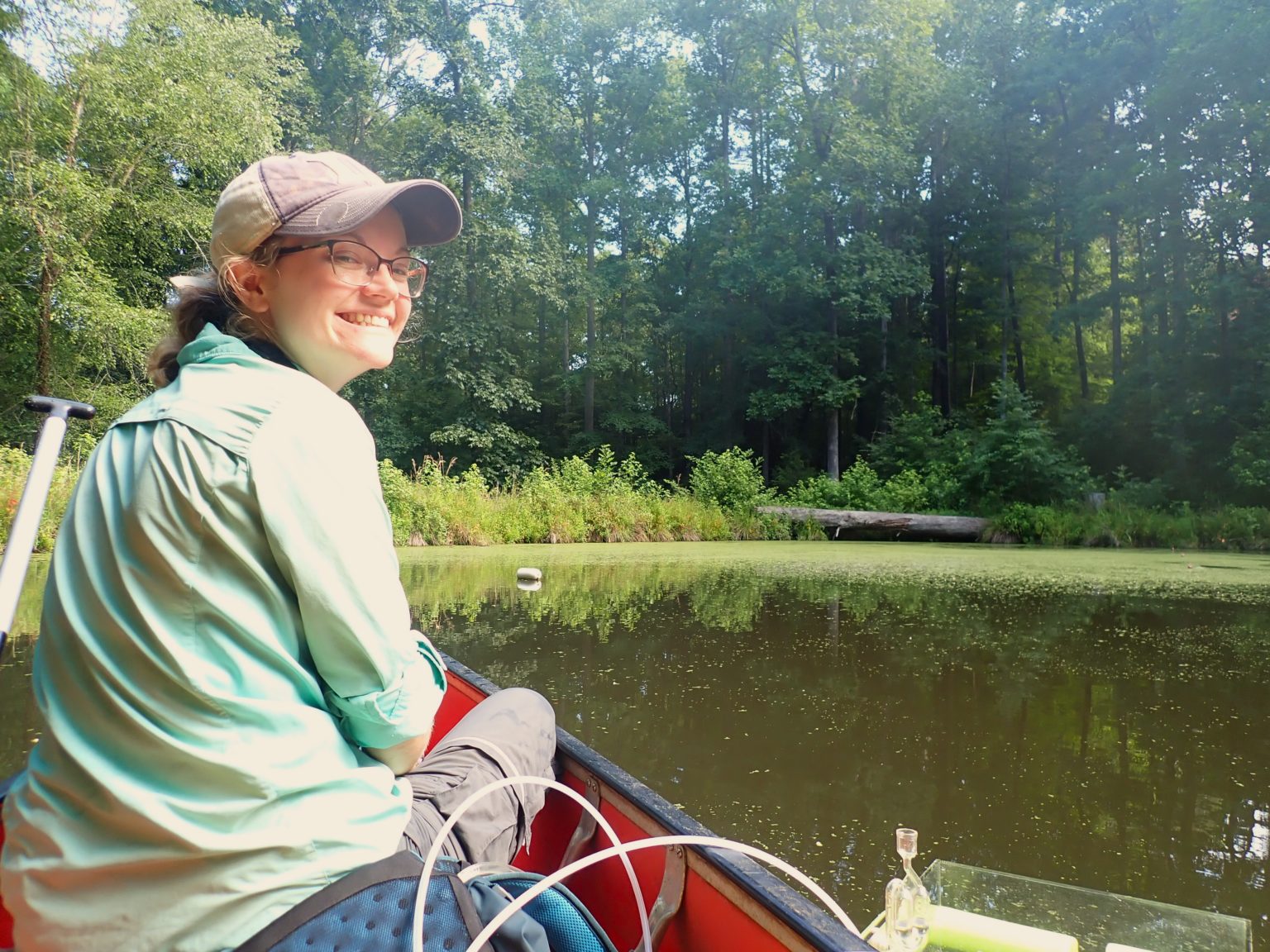By 7:45 a.m. on Tuesday, June 21, Laura Naslund had already spent over an hour in a canoe on a little pond on the east side of Athens, Georgia. Naslund, a graduate student in the Odum School of Ecology and a 2022 Spencer Grant recipient, was finishing up the first field sampling event of her new research project. She’d started work early on Monday morning, and was still paddling a canoe out to measure gas emissions all over the pond 24 hours later.
“The idea is to understand the times, places and pathways that are most important for emissions,” Naslund said over a quick breakfast, “and then apply that information to a later study at more sites which examines the drivers of the differences in emissions between sites.”
There are 364 reservoirs in Athens-Clarke County, but only 23 of them are listed in the National Inventory of Dams, leaving hundreds of smaller reservoirs that receive far less attention from freshwater research and management alike.
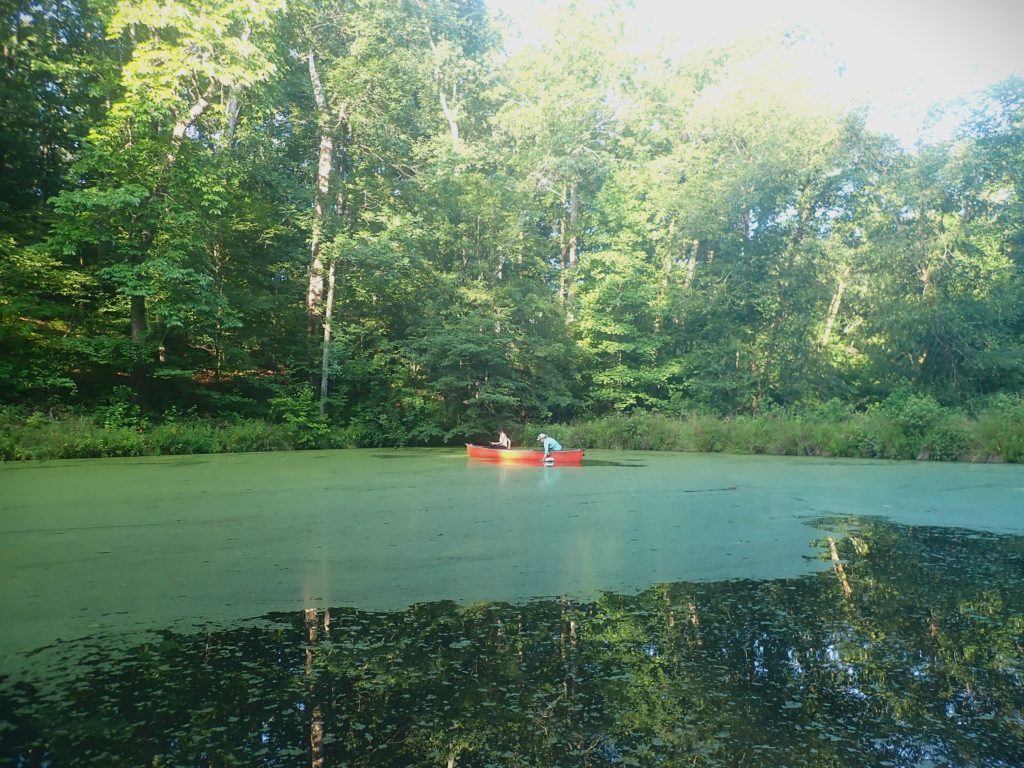
Naslund believes these small reservoirs may have a much larger impact on inland water systems than we currently recognize. She hopes to expand our understanding of freshwater reservoir emissions by focusing research attention on the small ponds of Athens. The end goal of Naslund’s research is to help inform infrastructure decisions regarding which of these dams have the greatest environmental impact and which may be highest priority for removal.
“Particularly as we are about to have the largest infrastructure investment probably in my lifetime, I think now’s a good time to start thinking about how we can use ecological knowledge to inform where and what kind of infrastructure we have,” she explained. “And this project, I think, is a little bit unique among that body of work in that it’s focused on the end of an infrastructure life cycle.”
Naslund is particularly dedicated to accurate field testing: data collection for this research will involve sampling all over each test reservoir for over 24 hours at each event. These methods were designed to get the most accurate possible understanding of where, when and how gases are emitted throughout a day.
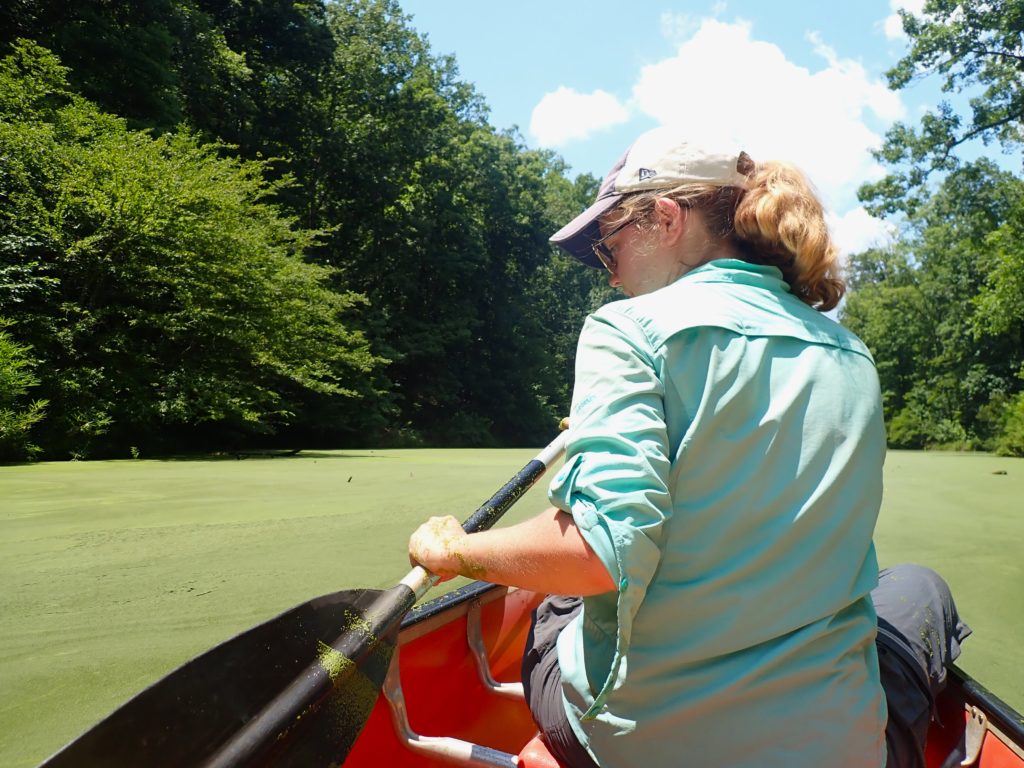
“I think researchers have thought about spatial variation a lot, we’ve thought about seasonal variation a lot, but we’ve though less about the variation in emissions that happens over the course of a single day,” Naslund explained. By focusing on variation at a daily scale, Naslund hopes to collect emissions data that more accurately represents the natural history and spatial heterogeneity of a system.
It’s strenuous work to sample for 30 hours at a time, but Naslund doesn’t mind camping out. “The places that I’m working in are beautiful. So that always helps!”
She also acknowledged that she could not do this research alone. Her team of volunteer assistants included professors, undergraduates, and fellow graduate students, who came in shifts throughout the 30-hour sampling. “It’s been really great to collaborate with people, to show them new techniques, and to learn from them,” Naslund said.
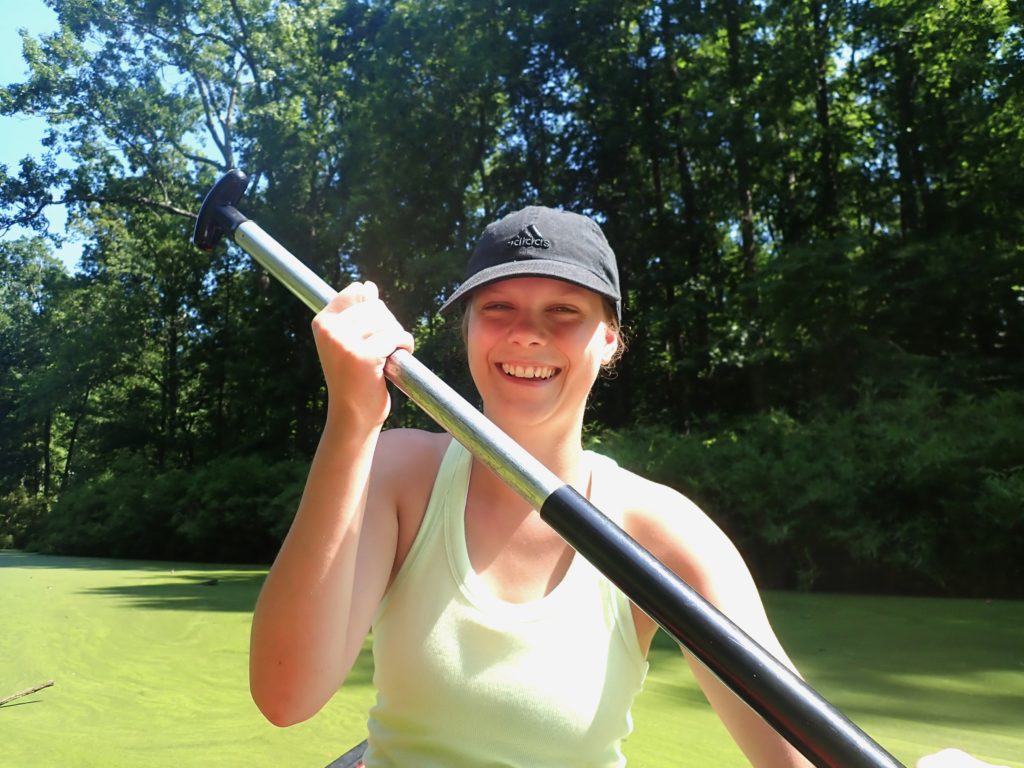
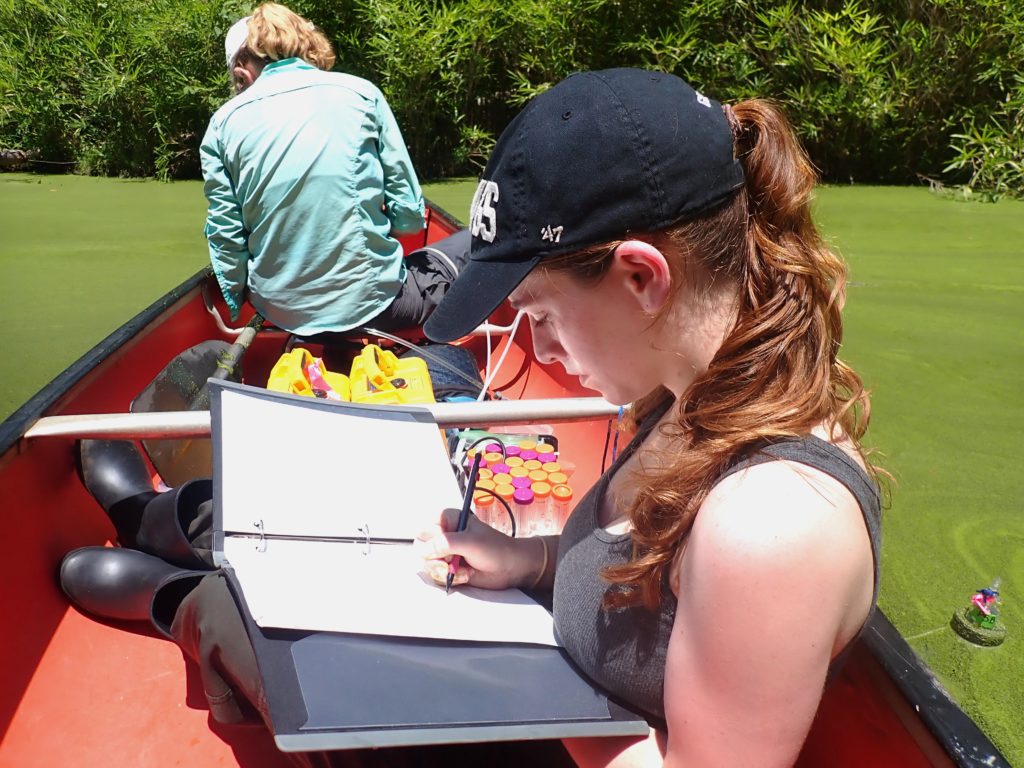
Naslund’s research is funded by the Network for Engineering With Nature, a collaboration between UGA and the US Army Corps of Engineers, along with a grant from the Odum School of Ecology and a 2022 Spencer Grant from the River Basin Center. The Spencer Grants are annual awards given to graduate students studying freshwater management and conservation. The grant is named for the late John Kyle Spencer, an Odum graduate student who was passionate about freshwater research. Research like Naslund’s is a reflection of this passion for freshwater science and cooperation among environmental researchers.
Photos and story by Olivia Allen

